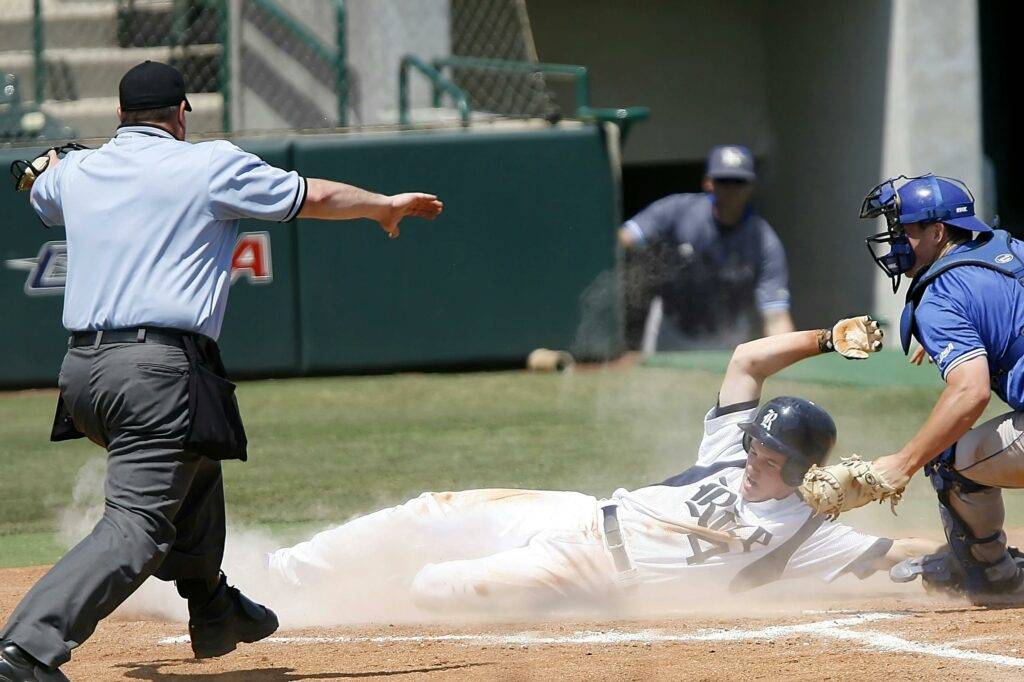Essential Guidelines For
Baseball Recruitment
Essential Guidelines for Baseball Recruitment with Athlete Pipeline
Understanding how the baseball recruiting process works and what college scouts are looking for is essential for any athlete aiming to compete at the college level. College coaches assess key skills like arm strength, fielding range, speed, and hitting power. Using the recruiting guidelines as a reference point can help athletes determine how they stack up against college competition and identify areas for improvement. With Athlete Pipeline, athletes can efficiently track their progress and stay informed throughout the recruiting journey.
How to Use the Baseball Recruiting Guidelines with Athlete Pipeline
Recruiting guidelines serve as benchmarks for players to evaluate their performance against college-level standards. While these benchmarks aren’t absolute, they give athletes a sense of where they stand in terms of skill and athletic development. Here’s how Athlete Pipeline can help you leverage these guidelines to boost your recruitment:
- General Benchmarks: Guidelines offer a point of reference, but individual skill development is what really matters. Use Athlete Pipeline to highlight your progress.
- Travel Ball Experience: Division 1 prospects often have extensive travel ball experience. Ensure you’re participating in top-level competitions and update your Athlete Pipeline profile with these achievements.
- Get Evaluated: Have your skills assessed by trusted coaches or third-party evaluators, then showcase the results on Athlete Pipeline to present a complete profile to college scouts.
What College Baseball Coaches Look for in Recruits
College coaches evaluate athletes based on their ability to compete at the collegiate level. Strength, speed, and athleticism are key, but they also consider factors like commitment, work ethic, and behavior. Coaches often rely on feedback from current coaches, making it important to showcase these qualities on your Athlete Pipeline profile. Here’s what coaches look for:
- Commitment to the Sport: Highlight your dedication and long-term goals in your Athlete Pipeline profile.
- Work Ethic: Coaches watch for players’ behavior on and off the field. Keep your Athlete Pipeline profile updated with any relevant testimonials or feedback from coaches.
When Do Scouts Start Evaluating Baseball Players?
Most coaches start evaluating athletes when they’re physically developed enough to project future performance. Athlete Pipeline helps you track key development milestones and stay competitive by keeping you informed of the ideal times to participate in showcases and camps. Focus on improving against high-level competition and use Athlete Pipeline to track your progress over time.
Division Recruiting Guidelines
Each division level has specific recruiting guidelines to help athletes determine where they might fit. With Athlete Pipeline, athletes can align their development with these benchmarks and target the right schools.
Division 1
- Experience: 3-4 years of high-level travel baseball.
- Honors: Multiple All-Conference, All-State, or All-Area awards.
- Varsity Starter: At least 3-4 seasons.
Division 2
- Experience: 2-3 years of travel baseball.
- Honors: Multiple All-Conference and All-Area awards.
- Varsity Starter: 2-3 seasons.
Division 3 & NAIA
- Experience: 2-3 years of travel baseball.
- Honors: Multiple All-Conference or All-Area awards.
- Varsity Starter: 1-2 seasons.
Junior College
- Experience: 2-3 years of travel baseball.
- Honors: Multiple All-Conference or All-Area awards.
- Varsity Starter: 1-2 seasons.
Using the Guidelines to Improve with Athlete Pipeline
The guidelines provided by Athlete Pipeline are designed to help athletes focus their training and development. Whether it’s improving your pitching velocity, refining your swing, or boosting your fielding range, Athlete Pipeline allows you to track your progress and align your skills with what scouts and coaches are looking for.
Pitchers
- Division 1: 84-95+ MPH, command of 3 pitches, ERA under 2.00.
- Division 2: 82-90+ MPH, control of off-speed pitches, ERA under 3.00.
- Division 3 & NAIA: 77-82 MPH, ERA between 2.50 and 3.50.
Catchers
- Division 1: OBP .500, Pop Time 1.95 seconds or lower.
- Division 2: OBP .450, Pop Time 2.0 seconds or lower.
- Division 3 & NAIA: OBP .400, Pop Time 2.0–2.1 seconds.
Infielders and Outfielders
- Division 1: 60-yard dash under 6.8 seconds, strong infield velocity, OBP .500.
- Division 2: 60-yard dash under 6.9 seconds, good hitting stats and strong defensive skills.
- Division 3 & NAIA: Speed, arm strength, and consistency at the plate are key metrics.
Stand Out in the Recruitment Process
Whether you’re targeting Division 1, 2, or 3 programs, Athlete Pipeline provides the tools you need to showcase your strengths. By using the recruiting guidelines as a roadmap, you can fine-tune your training and focus on the areas that matter most. With Athlete Pipeline, you’ll have the platform to continuously track your progress and keep coaches updated on your achievements.

